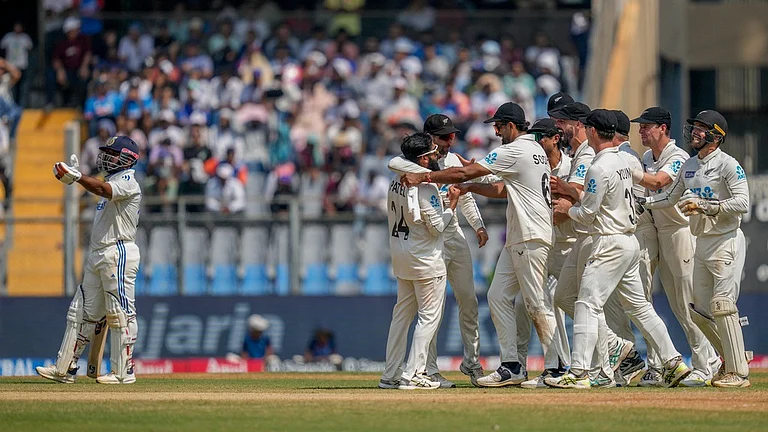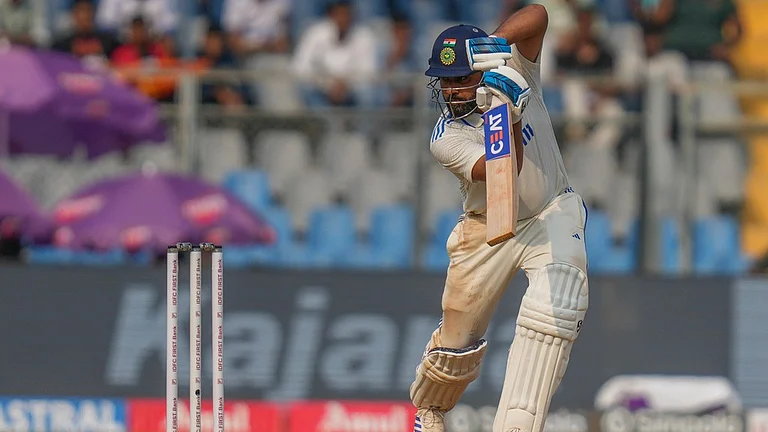It will take some time, a considerable length of time for Indian cricket to digest the 3-0 series whitewash by New Zealand in their own den. New Zealand did not just win a historic series, they breached India’s fortress and their soul – a feat not achieved by many in the past. (More Cricket News)
They triumphed in shores where some of the all-time great visiting teams have faltered, and in that sense conquered the ‘final frontier’ in cricket.
We look at some of the numbers which define New Zealand’s historic win and India’s colossal loss.
The greatest series win in New Zealand’s Test history
New Zealand defeated Allan Border’s Australia 2-1 in a three-match series in 1985. It was their first series win Down Under and is regarded as New Zealand’s greatest series win ever in Test cricket.
While Richard Hadlee was the star of the series with a record 33 wickets, Martin Crowe was the best batter with an aggregate of 309. They also triumphed in England for the very first time in the following summer where again, Hadlee and Crowe led the charge.
The series triumph in India, however, trumps the 1985 and ‘86 wins in Australia and England. No team in Test cricket history had been dominant at home like the Indian team between 2012 and 2023.
They were almost unbeatable and had decimated opposition teams at home for over a decade.Not only did they have world-class batters, but in R Ashwin and Ravindra Jadeja possessed two of the greatest bowlers for India at home in their Test history.
New Zealand had a torrid record in India before 2024. Amongst the six teams who had won at least one Test in India, New Zealand had the worst win-loss ratio of 0.117. They had won just two Tests and lost 17.Their last Test win in India came 35 years ago in 1988.
While New Zealand benefitted due to the conditions in Bengaluru, they beat India on turning tracks in Pune and Mumbai, with their lesser-known spinners outshining their more famous Indian counterparts.
Moreover, New Zealand had never won three Tests in a series ever before – either at home or away - in their cricketing history! And they were without their captain and arguably greatest batter ever – Kane Williamson.
India’s biggest series defeat at home in their Test history
The 0-3 loss to New Zealand was the first time India had been swept away at home in a series involving three or more matches. The only other instance of India being swept by a visiting team was when South Africa won 2-0 in India in 2000.
India dipped to a new low at the Wankhede in Mumbai, succumbing to their first defeat chasing a target less than 200 at home. They had previously won all the 31 matches on home soil where the target in the fourth innings was less than 200.
Moreover, it was India’s fourth Test defeat at home of the year. The only other year where India had lost four home Tests was 1969.
India were bowled out for less than 160 three times in the series – once in each of the three Tests. It was only the sixth instance in India’s Test history that they recorded at least three totals of below 160 in a series. The last time this happened was when England toured India in 1976-77 in what was a five-Test series.
The complete failure of Rohit-Kohli
The abject failure of two of India’s stalwarts – Rohit Sharma and Virat Kohli – was one of the primary reasons for the team’s failure in the series. The duo combined to score just 184 runs in 12 innings in the series at a poor average of 15.33, with just two fifties between them.
Rohit had an aggregate of 533 runs in 19 Test innings at an average of 28.05 at home in 2024. He failed in 14 of these innings, which is a very high Failure Rate of almost 74% - basically failing in three of every four innings he batted this year on Indian soil.
Rohit tried to replicate his aggressive style of play which brought him great success in limited-overs cricket in the last three years, including in the two World Cups – the 2023 World Cup in India and the 2024 T20 World Cup in the Caribbean/USA. However, India’s version of Bazball, while succeeding against Bangladesh, failed miserably against a higher quality opposition on tougher pitches in the series against New Zealand.
There was a stark difference between Rohit, the aggressor in white-ball cricket and Rohit, the aggressor in Tests. While in limited overs, the attacking template was adopted by Rohit the skipper to maximize India’s potential of scoring runs in the powerplay which would in turn increase their chances of victory, the same method in the Test series against New Zealand was more of an ‘escape’ from the challenging batting conditions. Rohit tried to hit his way out of trouble as he was not confident of his defence against the spinners and pacers, and in doing that perished.
India’s problems compounded as their other talisman, Kohli, has also had a very ordinary year in Test cricket. Kohli has failed in seven of the 10 innings at home in Tests in 2024 – which is again, a high Failure Rate of 70%. He scored just 192 runs at an average of 21.33, with one fifty-plus score in India in 2024.
Kohli’s struggle against spin at home has been accentuated in the last few years. While he averaged a whopping 103.23 against their ilk between 2016 and 2019, the average has come crashing down to 28.29 post 2020, with 21 dismissals in 25 innings.
India’s batting woes against part-time spinners
India lost 40 wickets against the New Zealand spinners in the three Tests at an average of 22.6 and balls per wicket of 31.3. On the other hand, the Kiwi batters lost 45 wickets against the Indian spinners but at a slightly better average of 24.7. They also faced more balls per dismissal (38.9).
India’s batters have struggled against not-so-famous opposition spinners in the last few years at home in Test cricket. And the trend is only worsening. The popularity of T20 cricket has meant that there is deterioration in techniques and temperament needed for Test cricket.
Also, India have fallen into a trap in order to maximize home advantage. The last few years have seen an increase in rank turners which have made life very difficult for the Indian batters as well. This has also reduced the gap in the quality between high-quality Indian spinners and an ordinary overseas spinner – both pose similar threats for batters on a difficult wicket.
India had a batting average of 51.1 against spin in 2016, 40.7 in 2017, 80.3 in 2018 and 91.1 in 2019. The downward trend started from 2021 with the average falling drastically to 33.4 in the calendar year and the pattern has continued thereafter. It was 38.4 in 2022, 27.1 in 2023 and 35.1 in 2024.
India need to go back to a classic Indian wicket if they really want to maximize home advantage – a pitch which offers something to the fast bowlers on the morning of Day 1, flattens out on Days 2 and 3 and then brings the spinners in play in the last two days of the Test.




















